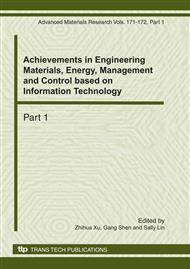p.592
p.596
p.600
p.604
p.609
p.613
p.617
p.622
p.628
An Empirical Study on the Effectiveness of Self-Access Language Learning and its Autonomy Based on Self-Access Center
Abstract:
With the deepening reform of college English teaching in China, many self-access centers(SAC) have been established in universities to promote students’ antonomy and cultivate their leanring ability. Based on the theories of constructivism, humanistic psychology and cognitive psychology, the self-access language learning ( SALL), with its new emphasis on speaking and llistening , is a very good supplement to traditional classroom teaching ,whose focus is only on reading and writing. This paper intends to probe into the effectiveness of students’ SALL in SAC of Wuhan Polytechnic Universtiy through an empirical study. After analyzing the findings qualitatively and quantitatively, the results show that that learners’ autonomy, by and large, can be achieved. SAC and SALL is sure to be very helpful to arouse learners’ learning interest, foster their independence, improve their problem–solvling ability and facilitate their four-skilled abilities.
Info:
Periodical:
Pages:
609-612
Citation:
Online since:
December 2010
Authors:
Keywords:
Price:
Сopyright:
© 2011 Trans Tech Publications Ltd. All Rights Reserved
Share:
Citation:


